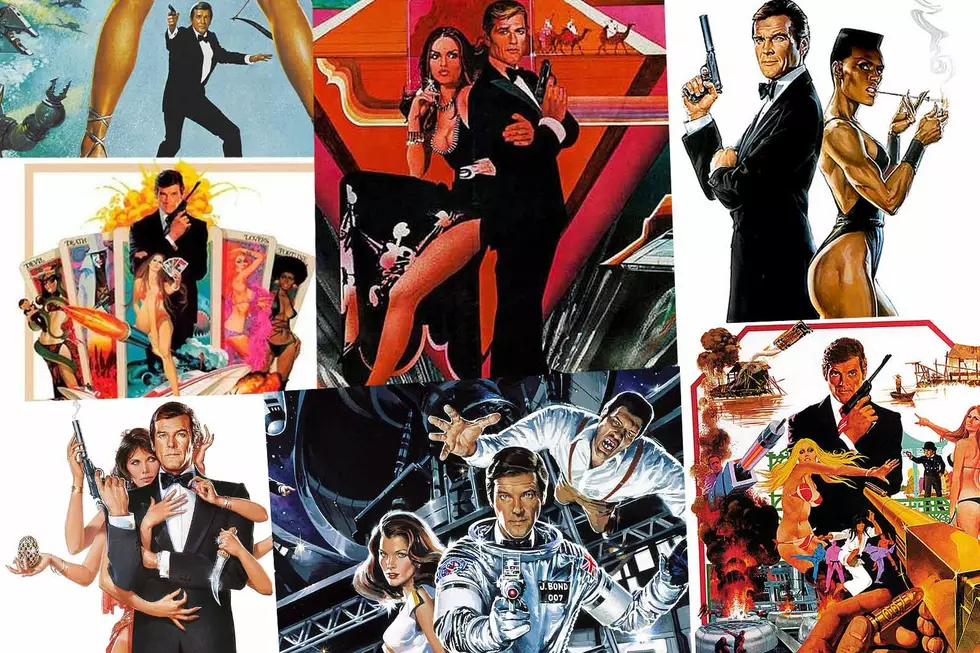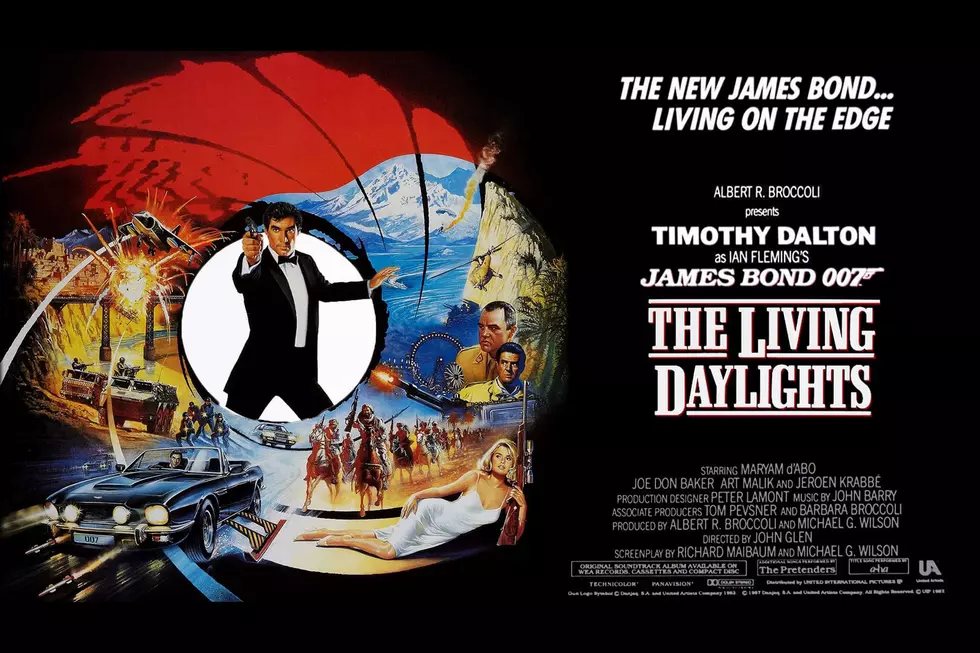
The Stories Behind All Seven of Roger Moore’s James Bond Movies
Roger Moore played James Bond in seven movies over 12 years. But he even though he held the part longer than Sean Connery, he knew was always going to be compared to the man who created the role, a notion he downplayed.
"I never saw what the fuss was about," he once shrugged. "Hundreds of actors have played Hamlet, so it should be the same with James Bond."
Moore came to the franchise after spending seven years playing another British spy, Simon Templar, in the television series The Saint. But he still had to make the make the role his own. A couple of incidents in his youth turned Moore against guns; he often squinted as he fired his prop Walther PPK to avoid blinking -- a trick he said he learned from Gary Cooper.
His overall reticence towards violence helped re-shape the series. In Moore's hands, Bond didn't take things too seriously no matter how much the fate of the world depended on him. That self-mocking approach extended to his own acting ability, having once described his range as “everything from 'raises left eyebrow' to 'raises right eyebrow.'"
In the Moore years, the franchise morphed from taut, tense thrillers to overblown, escapist fun, with the plots becoming less integral to the story than the action sequences, gadgets and women. And it was all delivered with doses of irony and camp. But where the first Bond movies had created their own niche within the spy thriller genre, during this time they began borrowing ideas from other popular trends in cinema to uneven results. Read below to learn the stories behind all seven of Roger Moore's James Bond films.
'Live and Let Die' (1973)
In his first turn as Bond, Moore acquitted himself well. Tom Mankiewicz took Ian Fleming's second 007 novel and, as a nod to the popularity of blaxploitation films, changed Live and Let Die's gold smuggler to an African American drug smuggler. Mankiewicz's script and Guy Hamilton's direction blended the tense danger of the Connery movies with the lighter, ironic touch that Moore brought, and it was all aided by Paul McCartney's fantastic theme song.
'The Man With the Golden Gun' (1974)
The franchise took a step back with The Man With the Golden Gun, but it couldn't all be blamed on the star. Like Live and Let Die, Moore's second movie borrowed ideas from a current cinematic trend (kung-fu movies), and while it has one of the best Bond villains (Christopher Lee as Mr. Scaramanga), much of the movie veered towards camp. Even its coolest moment, where Bond's car does a 360 in mid-air, is accompanied by a cartoonish sound effect. After The Man With the Golden Gun was a critical and box office disappointment, the producers took some time to figure out how to revive the series.
'The Spy Who Loved Me' (1977)
The best way to keep James Bond relevant, it was determined, was to go big. From the opening ski chase to the nuclear war-thwarting finale aboard a submarine, no expense was spared on The Spy Who Loved Me, with filming spread out over four continents. Lewis Gilbert, the director of You Only Live Twice, returned, and he played to Moore's strengths, namely his suave charm. But it also helped that 007's main foil, a silent, indestructible, 7'2" metal-mouthed assassin named Jaws (Richard Kiel), was the best henchman in a Bond film since Goldfinger's Oddjob. The production design, Marvin Hamlisch's score and Carly Simon's theme song ("Nobody Does It Better") were all nominated for Academy Awards.
'Moonraker' (1979)
Jaws proved so popular -- the decision to have him survive the climax of The Spy Who Loved Me was made through audience testing -- that he was brought back for Moonraker. He even pulled off a face turn by helping Bond defeat Hugo Drax (Michael Lonsdale), an industrialist who plans to poison all of humanity, repopulating the Earth from outer space via a hand-picked group of beautiful people who are transported to his space station via the Moonraker shuttle. The idea of putting James Bond in outer space was a clear attempt to cash in on Star Wars' unprecedented success; it was rushed into production ahead of For Your Eyes Only, which was scheduled to follow The Spy Who Loved Me. It may have stuck box office gold, but it was also one of the more preposterous of Moore's efforts.
'For Your Eyes Only' (1981)
After two movies that saw him go underwater and into orbit, 007 mostly stayed on land in For Your Eyes Only, which was also a return to plots taken from Fleming's stories (The Spy Who Loved Me and Moonraker only used the titles). The back-to-basics approach, complete with a Cold War plot where Bond had to retrieve a device that controls British missiles before the Soviets could find it, worked. As a bonus, there were some rare nods to earlier films -- Blofeld shows up in the opening sequence and Bond visits the grave of his wife, Tracy, whom Blofeld killed in On Her Majesty's Secret Service.
'Octopussy' (1983)
Now in his mid-50s, Moore had hoped to move on from Bond, and Eon Productions had found a replacement in James Brolin. But after learning that Connery was returning to the role of 007, through a 20-year-old lawsuit -- for a non-Eon production called Never Say Never Again, the studio was unwilling to give the part to an unproven commodity. The offer was rescinded and Moore was persuaded (to the tune of $5 million plus five percent of the U.S. gate) to come back. Sadly, the sillier side of James Bond under Roger Moore also returned for Octopussy, where a stolen Fabrege egg leads Bond to a cult trying to detonate an American nuclear warhead. It all seems like a typical 007 plot, complete with exotic locales, thrilling set pieces and several Bond Girls, except that, in order to accomplish the mission, Bond has to dress up as a clown and a gorilla.
'A View to a Kill' (1985)
James Bond began to show his age in A View to a Kill -- not just Moore but the whole franchise. Sure, there were attempt to spice things up -- such as two evil masterminds (Christopher Walken and Grace Jones), a story that showed the emergence of Silicon Valley and an edgy title song by Duran Duran -- but it felt tired. Moore wasn't even thrilled with the end result, citing “whole slews of sequences where Walken was machine-gunning hundreds of people” as a main issue.
James Bond Movies Ranked Worst to Best
More From Kool 107.9










